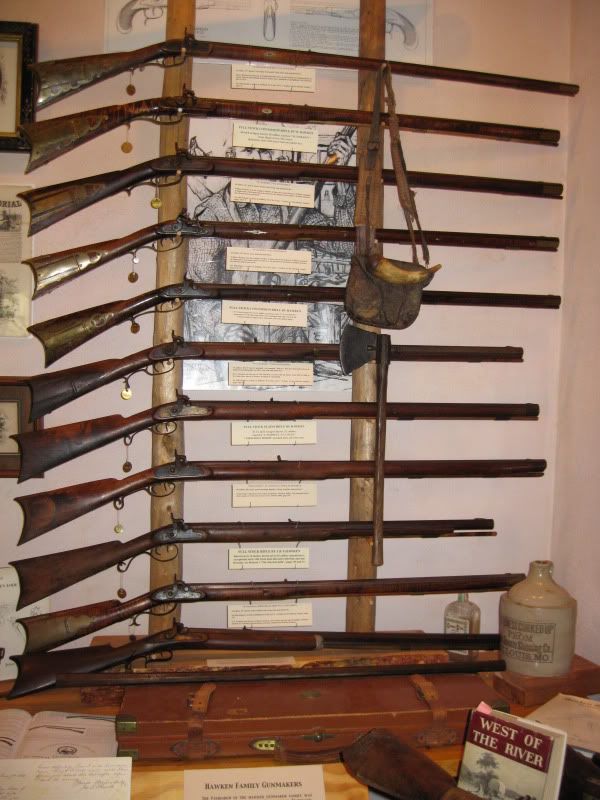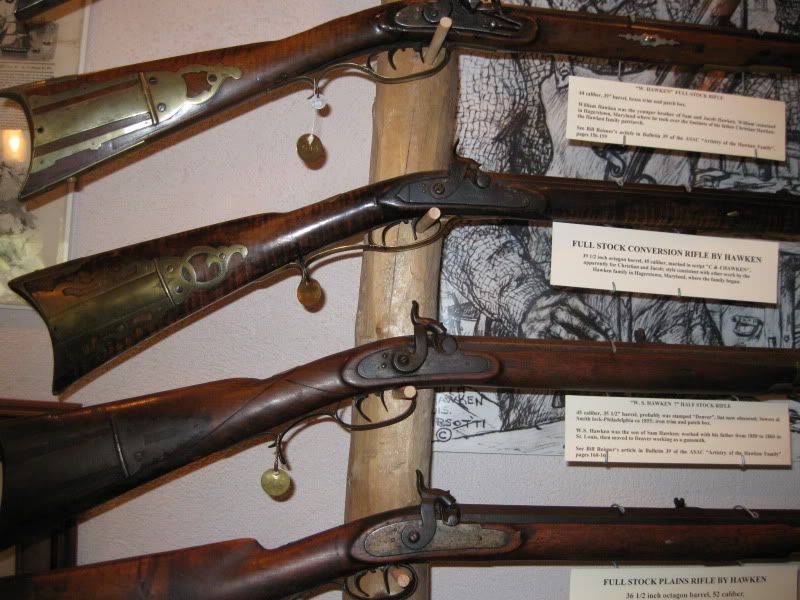Martin, Jim Gordon has a museum at Glorieta, NM (near SanteFe) in which he has about two dozen original Hawkens and probably that many Lemans. This rack shows some Hawkens, the bottom four on the wall are fullstock, plus the one under the bag. My photo is not clear enough, but I think they are all keyed, without escutcheons.

This is a closeup of a couple of them. You can enlarge these photos on your computer, on my IBM-type, I hold down control and hit the plus sign, minus makes smaller, and control zero returns to normal.

Jim Gordon published a three-volume set of books "Great Gun Makers for the Early West", volume III has photos of these Hawkens. He has color photos of six fullstock rifles, one cut to halfstock. All are keyed with no escutcheons. One has four keys, the others three. He also has photos of two halfstocks with keys but no escutcheons.

